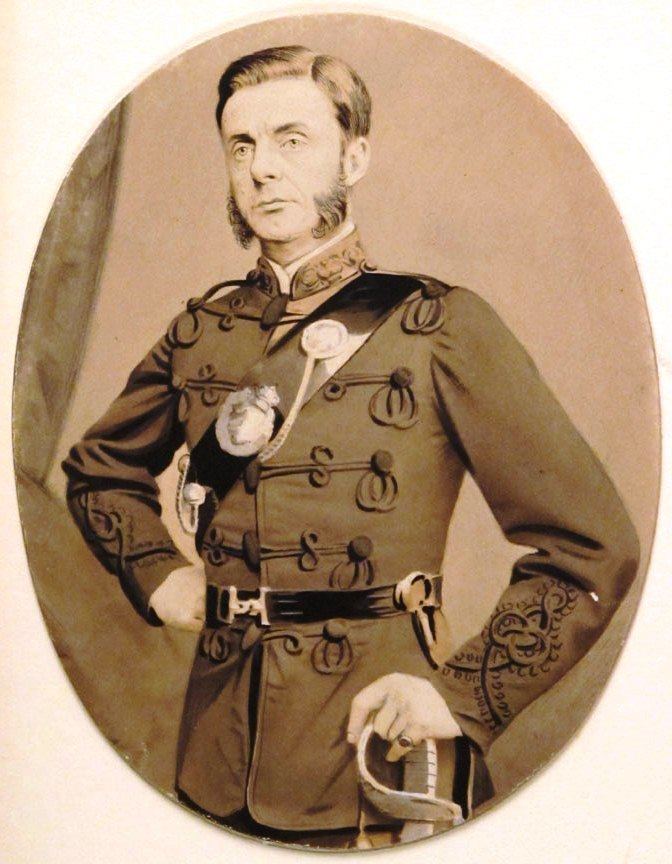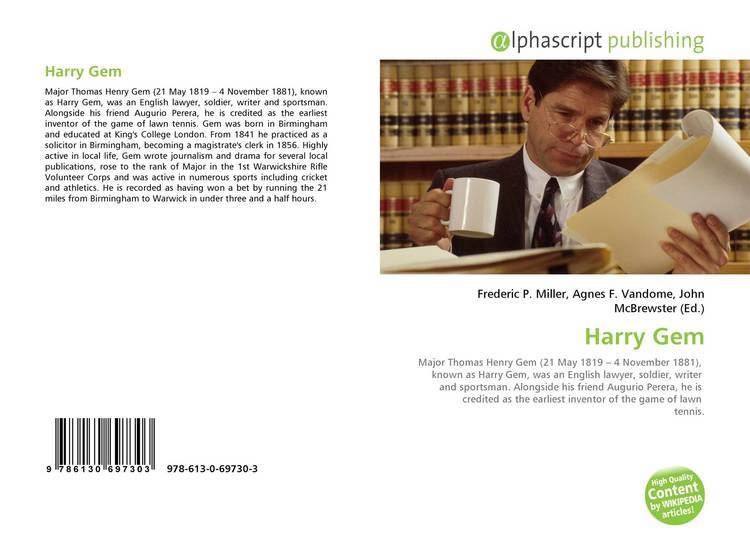Nationality British Name Harry Gem | Role Lawyer | |
 | ||
Died September 4, 1881, Birmingham, United Kingdom | ||
Major Thomas Henry Gem (21 May 1819 – 4 November 1881), known as Harry Gem, was an English lawyer, soldier, writer and sportsman.
Contents

Alongside his friend Augurio Perera, he is credited as the earliest inventor of the game of lawn tennis.

Biography
Gem was born in Birmingham and educated at King's College London. From 1841 he practiced as a solicitor in Birmingham, becoming a magistrate's clerk in 1856.
Highly active in local life, Gem wrote journalism and drama for several local publications, rose to the rank of Major in the 1st Warwickshire Rifle Volunteer Corps and was active in numerous sports including cricket and athletics. He is recorded as having won a bet by running the 21 miles from Birmingham to Warwick in under three and a half hours.
Invention of lawn tennis
Among Gem's sporting interests was the game of rackets, which he played at the Bath Street Racquets Club adjacent to the Racquet Court Inn in Bath Street, Birmingham with his friend Augurio Perera, a Spanish merchant based in Birmingham. Frustrated at the complex and expensive facilities required for rackets, however, the two developed a simpler game that could be played on Perera's croquet lawn at 8 Ampton Road in Edgbaston, incorporating elements of rackets alongside features of the Basque game of pelota.
This game is known to have been being played by 1865, though research has suggested that experimentation may have started as early as 1859. It thus clearly pre-dates the game of sphairistikè, whose rules were published and for which equipment was sold by Major Walter Clopton Wingfield from March 1874.
Gem and Perera's game also bore a closer resemblance to modern tennis than Wingfield's in several significant respects, most notably in being played on a similarly sized and configured rectangular grass court, rather than the hourglass-shaped court with a 'waist' at the net that featured in Wingfield's sphairistikè.
Originally referred to as Lawn rackets or Lawn pelota, Gem and Perera's game was being referred to as Lawn tennis by 1872.
Early tennis clubs
Some time between 1873 and 1874 both Gem and Perera moved to Leamington Spa and in 1874 formed the Leamington Club with Frederic Haynes and Arthur Tomkins, two doctors from a local hospital, specifically to play the new game of lawn tennis. The Leamington Club, renamed to Leamington Lawn Tennis Club at the end of 1874, thus became the world's first tennis club, playing on the lawns of the Manor House Hotel opposite Perera's new home in Avenue Road.
Gem had also been a member of the Edgbaston Archery Society from 1864 to 1867 and, although there is no direct evidence to demonstrate that he personally introduced lawn tennis to the society, the game was certainly a fixture in the society's calendar by 1875, with the society being renamed the Edgbaston Archery and Lawn Tennis Society in 1877.
